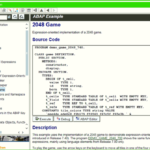Exchange rate determination in Sales and Distribution

SAP has many if and buts when it comes to determining the exchange rate in a sales order or in billing or transferring billing to accounting. In this blog, we will be discussing about it.
- Exchange rate at the time of transferring billing to accounting
If a customer billing document is transferred to Accounting, the exchange rate for Accounting (field VBRK-KURRF) is always determined with exchange rate type M, even though a different exchange rate type is maintained in the customer master record.

- Intercompany billing transferred to accounting
If a billing document for intercompany billing is transferred to Accounting, the exchange rate for Accounting (VBRK-KURRF) and the pricing exchange rate (VBRP-KURSK) are determined with the exchange rate type from the customer master record. However, exchange rate type M should be used.

- Exchange rate as per coping control
In the copying control for billing documents, as of Release 3.0, there is a switch for the pricing exchange rate. If this switch is set, the system always determines the pricing exchange rate for exchange rate type M, even if a different one is entered in the customer master.

Exchange rates in billing document
There are three exchange rates available in billing
- Accounting exchange rate (in header)
- Exchange rate for evaluating the price (in line item)
- Exchange rate for condition types
- 1. Accounting exchange rate (in header)

- It is about the conversion of Local Currency and Document Currency for Financial(FI) postings.
- Customer invoice – If there is a manual entry in the sales order field VBKD-KURRF (Goto -> Header -> Accounting), then it is copied into VBRK-KURRF. Otherwise, VBRK-KURRF is determined during invoice creation from the currency tables (Transactions: OB08, OB07, and OB22) according to the billing date. It is supposed that manual entry has a higher priority. If there is no exchange rate type set in customer master (KNVV-KURST), then by default exchange rate ‘M’ is taken.
- Intercompany billing – VBRK-KURRF is always redetermined.
- It is because sales order and intercompany invoice could have different local currency, so it doesn’t make sense to copy the exchange rate.
- 2. Exchange rate for evaluating the price (line item level)

- It is about conversion of Local Currency and Document Currency for Price determination.
- The determination of this exchange rate depends on the setting of “PricingExchRate type(TVCPFLP-PFKUR)” in customizing Copy Control transaction VTFL or VTFA.
- 3. Exchange rate for condition types

- It is about conversion of Condition Currency and Local Currency at price condition level.
- Generally, the system always uses pricing data to determine the exchange rate for the conversion of the condition currency to the local currency.
- While for the copied conditions, a new exchange rate determination doesn’t happen. If you expect KOMV-KKURS to be determined based on pricing date(KOMK-PRSDT) for copied conditions during billing creation
This is how exchange rates work in sales and distribution. If you want to add something to it, do comment below
Blog contains references from below SAP notes and for more details check these Notes:
1481238 – How are different exchange rates (Price, FI postings and Conditions) determined in billing documents
22781 – Foreign currency rate for accounting, exchange rate type
If you have any suggestions or questions do let us know in the comment section or you can also write us directly.
Sign up with us to get an update of a new blog post.
Till then you can have look at our ebooks.




